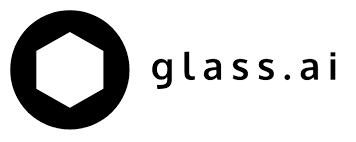The OECD uses glass.ai to understand vast amounts of text and gather insights from the web.
The Organisation for Economic Co-operation and Development (OECD) today held a high-level event in Paris to map the way forward on digital era policymaking. We were kindly invited to attend as the event also saw the launch of a huge report measuring the state of digital transformation. Glass has contributed to this report and we continue to work with the OECD on other exciting projects.
Measuring the Digital Transformation
Sound measurement is crucial for evidence-based policy making, but existing ‘official’ metrics and measurement tools struggle to keep up with the rapid pace of digital transformation. Governments and leading economic institutions like the OECD recognise this and are exploring new complementary approaches. Here is where Glass comes in.
After discussions with senior economists and data scientists at the OECD, it was suggested that an initial case study would be to map the AI ecosystem in the UK. Using the Glass AI capability, the OECD team found the following:
Case Study: mapping the activities of UK AI companies
AI companies in different industries are developing and applying different types of AI-related technologies. Everybody holds that Artificial Intelligence is permeating all sectors of the economy. However, little is known about which type of AI technologies and approaches are being developed and used in different sectors, and for which purpose.
Using the Glass AI capability that understands web text at scale, the OECD has revealed the existence of about 6 thousand AI-related companies in the United Kingdom alone in 2018, about 2.8 thousands of which explicitly mentioning on their website to be active in AI. These companies appear to combine different AI-related technologies and approaches, depending on their application field or area of activity. For instance, about 400 companies are focusing on deep learning and are relying on automation-related technologies and, to a lesser extent, on data analytics. About 300 companies advancing AI in robotics, the Internet of Things (IoT) and virtual reality (VR) are focusing on automation and, to a lesser extent, on natural language processing (NLP). About 250 AI companies are focusing on analytics coupled with recognition-related technologies when developing e-commerce-related AI technologies purposes. About as many companies rely on different combinations of the same technologies in their data mining and business solutions-related developments, respectively.
AI-related companies in the United Kingdom, by the focus of activity, 2018
AI companies: shaping key sectors of the UK economy
The OECD has also gained more insights about the type of AI technologies that these companies are developing and applying by narrowing the focus on a few key sectors of the UK economy. In particular, Financial Services, Professional Services, and ICT manufacturing and service activities, which in 2017 accounted for 22.7% of total employment (7.3 million persons, up from 6.0 million in 2010) and for 53% of investment (i.e. gross fixed capital formation, GFCF) in ICT equipment.
Of the 2.8 thousand UK AI companies in the sample that explicitly state to be actively pursuing AI-related activities, 829 appear to operate in ICT manufacturing and services activities, 693 to professional activities and 162 to financial and insurance activities, a total of sixty percent of the sample. The other forty percent is distributed across ten sectors ranging from agriculture to real estate and construction. Some of them are developing and using several types of AI-related technologies, whereas others appear to be very much focused on one only area. Also, different technologies appear to be developed to relatively different extents. UK AI-active companies in ICT manufacturing and services are focusing their efforts in technologies related to language processing, business solutions and deep learning. By contrast, companies in Professional services are especially concerned with language processing, image recognition and robotics, IoT and virtual reality-related technologies. Finally, finance and insurance companies appear to be especially active in autonomous vehicles-related technologies, in deep learning, and in robotics, IoT and virtual reality.
AI-related technologies developed by UK companies, by the main sectors, 2018
Summary
This study has demonstrated again the potential of AI-based research using the open web as a live mirror of complex social and economic issues. We are entering a new era of economic measurement where national statistical offices will have to open up to new technologies and sources of data. We are very excited that the OECD is now using Glass to expand their evidence base and to gather economic insights from the web. It’s the start of a collaboration that will lead to many exciting opportunities and it is also helping us in our mission to digitally map the world’s economy. More to come!



